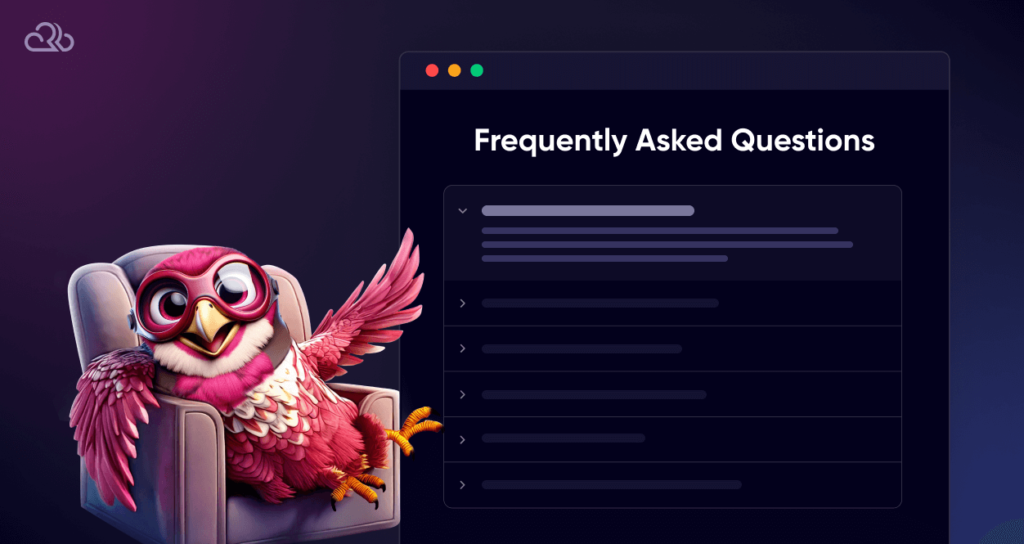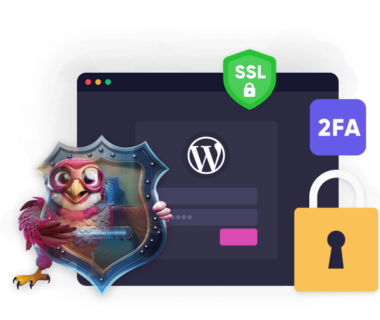If you own a membership website, you already know all kinds of threats constantly threaten it. The last thing you want is for your website to be compromised, which in turn will greatly hurt your brand reputation and, most importantly, your business model. Consider how IBM reported that a data breach costs $4.88 million globally, which should give you more than enough reason to take membership websites security seriously.
Since you cannot afford to lose your membership website’s credibility, you will need to adopt several membership websites security measures to protect sensitive data like financial records, user emails, and so on. Keeping this in mind, this guide will cover the best security practices for membership websites and how you can solve all your problems by simply switching to a reliable hosting provider.
Best Practices for Secure Membership Websites
Without wasting any time, let’s look at some of the best practices you need to adopt to secure your membership website.
1. Use SSL Certificates to Encrypt Data Transmission
Studies have shown that more than 84% of users exit a website without SSL, so if you want users to stick around, you must have the required SSL certificates in place. SSL certificates ensure there is an encrypted tunnel between your website and users, thus securing any and all data that is exchanged, like payment details and login credentials.
To get an SSL certificate, here is what you need to do:
- Verify the ownership of your domain.
- Choose an authority for the SSL certificate.
- Put in a certificate signing request.
- Send the certificate signing request to the certificate authority.
- Await validation.
- Once received, install the certificate.
Quick Tip: How about you choose a hosting provider that provides SSL certificates by default?
Also Read: Best Hosting for MemberPress Websites
2. Implement Strong Password Policies for Members and Admins
Reports indicate that 81% of data breaches result from stolen or weak passwords. As absurd as it may sound, many users still use passwords like 12345 or their date of birth, and so on. To avoid data breaches due to stolen or weak passwords, make it mandatory for users to create complex and strong passwords. Additionally, administrators should enforce periodic password updates to eliminate the risks originating from compromised credentials.
Quick Tip: If you are using weak passwords for your management website, how about you change them pronto?
3. Keep WordPress, Themes, and Plugins Up-to-Date
Interestingly, 61% of hacked WordPress websites had outdated software, which tells everything you need to know about the importance of ensuring your WordPress, WordPress themes, and plugins are up-to-date. Make it a habit to update all relevant software to eliminate potential risks that could do considerable harm to your membership website.
Quick Tip: How about you enable automatic updates to avoid the hassle of doing everything manually?
4. Use Two-Factor Authentication (2FA) for an Additional Security Layer
Research shows that two-factor authentication can block up to 100% of attacks, which solidifies the importance of using this preventive measure as an extra layer of protection for your membership website.
How two-factor authentication works is that it requires users to submit a code that is normally sent to a mobile device. This extra step may seem frustrating, but it is worth it considering the fact that will reduce any chances of unauthorized access, even if your passwords have been compromised.
Quick Tip: How about you set up Google Authenticator to secure your membership website rather than relying on SMS codes?
5. Install Security Plugins for Comprehensive Site Security
Many membership website owners do not know they can install various security plugins to monitor, detect, and eliminate risks. You can install plugins like Succuri and Wordfence to benefit from firewall protection, malware scanning, etc.
For the buddyboss hosting and memberpress hosting, choose platforms that support these tools, and if they don’t, understand that something is wrong. Chances are you will not be able to protect your membership website, which should explain why they were dirt cheap in the first place.
6. Set Up Firewalls and Monitor for DDoS Attacks
Considering the number of DDoS attacks rose by 118% in 2024, you must set up firewalls and monitor traffic to prevent DDoS attacks.
A firewall will act as a barrier between your website and all potential threats, essentially blocking malicious traffic before it can do any harm. Moreover, you must monitor your traffic for DDoS attacks, which may not seem like much at first but will overwhelm your server with traffic. If your server is overloaded, your membership website will be out for the count.
7. Regularly Back Up Your Website
If you do not want to lose your membership website for good, how about you start backing it up regularly? Consider setting up automated daily backups to quickly restore your website in case of a technical failure or breach. With this approach, you can minimize downtime and preserve vital data for smooth operations.
Quick Tip: Opt for secure hosting for membership sites that offer automated backups from the get-go.
8. Limit User Roles and Permissions
If you are determined about protecting member data, there is no better way to do so than by restricting user roles to their essential functions. This simple strategy will reduce the risk of accidental or malicious actions. Of course, you will need to assign permissions carefully, which will be time-consuming, but it will ensure users have access to the features they need and nothing more.
9. Monitor Logs for Suspicious Activity
Since prevention is better than cure, how about you take a bit of time to monitor logs for suspicious activity? While cumbersome, reviewing activity logs regularly will allow you to identify and deal with unusual behavior, such as unauthorized changes to your website or repeated login attempts.
10. Educate Users About Security Best Practices
According to a report from Verizon, phishing accounts for 36% of data breaches. If you want to secure your membership website, you must empower your users and educate them to identify phishing attempts. Give your users easy-to-digest information, such as how to navigate your website safely and create strong passwords. When your users are informed, this in itself will act as a line of defense against all kinds of cyber threats.
Quick Tip: Consider sending out a newsletter to educate your users about securing themselves online, just don’t spam them, though.
How Hosting Providers Can Strengthen Security?
While you can implement the best practices mentioned above to secure your membership website, another solution can nip the problem in the bud: opt for a reliable hosting provider.
A reliable hosting provider will protect your website from all kinds of security threats, curbing potential risks by delivering exceptional infrastructure and preventive measures against cyberattacks.
Speaking of a reliable hosting provider, if you do not know how to pick the best one, how about you check out Rapyd Cloud, the best managed WordPress hosting?
Rapyd Cloud takes security seriously, offering a secure hosting environment where it eliminates the need for manually adopting the best practices mentioned earlier. They are a WordPress hosting with SSL certificate, virtual patching, automatic malware detection, free malware insurance. Let’s take a look at them more in-depth:
- Built-in SSL encryption.
- Advanced security systems, including automated brute-force attack prevention and strong password enforcement policies by default.
- Automated updates and vulnerability patching.
- Built-in support for two-factor encryption.
- Comprehensive security plugins that come pre-configured and more.
Securing your membership website should not be a daunting task, which is why you will find Rapyd Cloud to be right up your alley. Rapyd Cloud is an all-in-one hosting solution provider that eliminates the burden of securing your website manually and allows you to focus on things that are really important, like driving traffic, increasing sales, growing your online community, etc.
Conclusion
When it comes to membership websites security, you will need to adopt multiple strategies. You must introduce strong password policies, choose the right hosting provider, and implement SSL certificates. You must also focus on educating your users, ensuring regular updates, etc., to stop potential threats dead in their tracks.
If you do not want the hassle of securing your website, your best bet would be to opt for Rapyd Cloud. You will be able to rest easy knowing your membership website is in safe hands, and you can focus on things that matter.
Frequently Asked Questions

What Are the Most Common Security Threats to Membership Websites?
Some common security threats include data breaches, phishing schemes, malware, and brute-force attacks.
How Can I Secure My Membership Website on WordPress?
You can secure your membership website on WordPress by keeping your software up-to-date, enabling two-factor authentication, using SSL certificates, etc. Additionally, you must educate your users on how to enhance WordPress membership security.
Why Is Hosting Important for Website Security?
Hosting providers offer essential features like automated backups, DDoS protection, and active monitoring. Essentially, a reliable hosting solution will ensure your website remains operational and secure at all times.
How Often Should I Update Plugins and Themes for My Membership Site?
Update plugins and themes as soon as updates become available. Regular updates patch security vulnerabilities and improve functionality.
Can Hosting Providers Help Prevent Brute-Force Attacks?
Yes, hosting providers, like Rapyd Cloud, with active monitoring and firewalls, can detect and block brute-force attacks, ensuring unauthorized users cannot gain access to your website.






